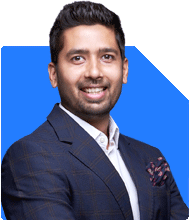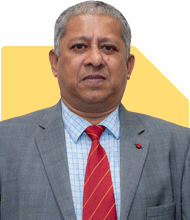Kirtan A Shah | Answer |Ask -Follow
MF Expert, Financial Planner - Answered on Nov 01, 2023
He is also a Certified International Wealth Manager and Financial Engineering and Risk Manager.
Shah is the co-author of Financial Service Management and Financial Market Operations, which are used as reference books for Mumbai University.
He is frequently seen on CNBC, Zee Business, ET NOW & BQ Prime as an expert guest.... more

Hi Kirtan. What would be best options to start investing at age of 52 to run post 60 years life.
You may like to see similar questions and answers below
Ramalingam Kalirajan |9752 Answers |Ask -Follow
Mutual Funds, Financial Planning Expert - Answered on Apr 30, 2024
Sunil Lala |212 Answers |Ask -Follow
Financial Planner - Answered on Feb 11, 2024
Ramalingam Kalirajan |9752 Answers |Ask -Follow
Mutual Funds, Financial Planning Expert - Answered on May 01, 2024
Ramalingam Kalirajan |9752 Answers |Ask -Follow
Mutual Funds, Financial Planning Expert - Answered on Jun 04, 2024
Milind Vadjikar | Answer |Ask -Follow
Insurance, Stocks, MF, PF Expert - Answered on Dec 19, 2024
Dr Nagarajan J S K |1778 Answers |Ask -Follow
NEET, Medical, Pharmacy Careers - Answered on Jul 15, 2025
Dr Nagarajan J S K |1778 Answers |Ask -Follow
NEET, Medical, Pharmacy Careers - Answered on Jul 15, 2025
Dr Nagarajan J S K |1778 Answers |Ask -Follow
NEET, Medical, Pharmacy Careers - Answered on Jul 15, 2025
Dr Nagarajan J S K |1778 Answers |Ask -Follow
NEET, Medical, Pharmacy Careers - Answered on Jul 15, 2025
Dr Nagarajan J S K |1778 Answers |Ask -Follow
NEET, Medical, Pharmacy Careers - Answered on Jul 15, 2025
Nayagam P P |8865 Answers |Ask -Follow
Career Counsellor - Answered on Jul 15, 2025
Nayagam P P |8865 Answers |Ask -Follow
Career Counsellor - Answered on Jul 15, 2025
Nayagam P P |8865 Answers |Ask -Follow
Career Counsellor - Answered on Jul 15, 2025
Nayagam P P |8865 Answers |Ask -Follow
Career Counsellor - Answered on Jul 15, 2025
Prof Suvasish Mukhopadhyay |2648 Answers |Ask -Follow
Career Counsellor - Answered on Jul 15, 2025










.jpg)












